Excerpts from Jim Conrad's
Naturalist Newsletter
from the August 2, 2018 Newsletter issued from Rancho Regenesis in the woods ±4kms west of Ek Balam Ruins; elevation ~40m (~130 ft), N~20.876°, W~88.170°; central Yucatán, MÉXICO
GUATEMALAN CRACKER JUST EMERGED FROM CHRYSALIS
Our Neem trees are dropping yellow, fleshy, cherry-like fruits these days, and beneath each tree there's a flurry of butterflies supping on the ripe fruits' juices. Maybe 90% of the butterfly species are "crackers," the English name for species of the genus Hamadryas, the name referring to "cracking" sounds made as they fly, like clicking fingernail tips against one another. Below, you can see a typical cracker congregation:
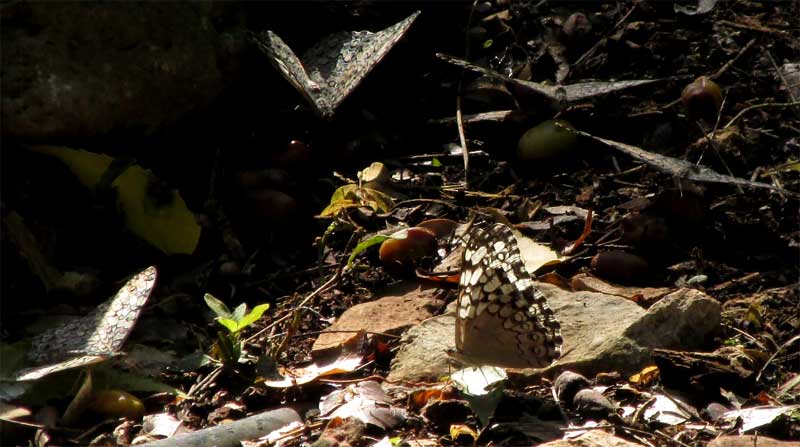
While taking the above shot I happened to notice a cracker very slowly, methodically, and wobbly, climbing up the spiky blade of a Mother-in-law Tongue plant beneath the Neem. You can see it below:
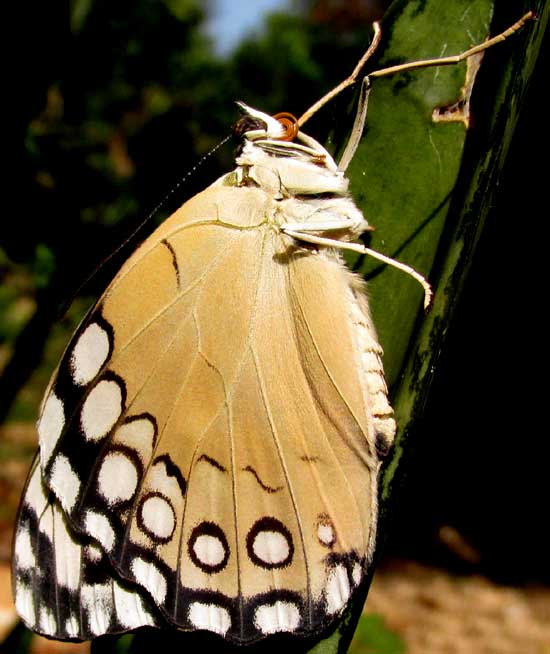
It seemed to be a cracker, but which one? I'd never noticed a cracker with such a large, tawny spot on the hindwing's undersurface. The butterfly's colors were so vivid, and it was so weak that the slightest breeze caused it to flop back and forth, that I thought it might have just emerged from its chrysalis and hadn't yet had time to gather its strength. As this was being figured out, the wind blew the creature to one side, and the wings were slightly opened, enabling a peep at their upper surfaces, which you can see below:
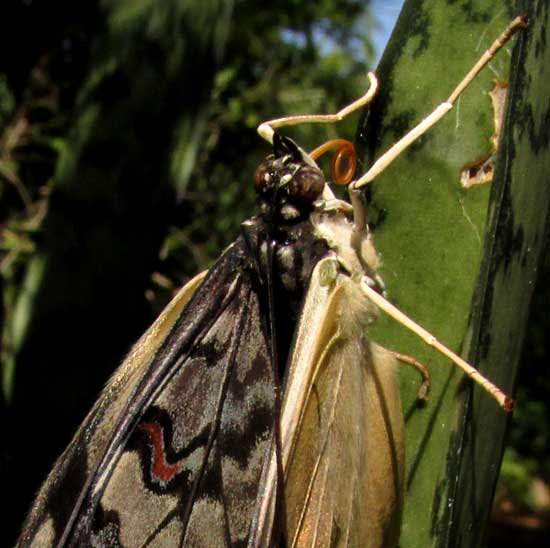
This picture shows that as our cracker gathered strength, his proboscis uncoiled and recoiled several times, as if loosening it up before flying off as a full-fledged adult and needing it to sip nectar or juice from fallen Neem fruits.
I've seen such a conspicuous, black-bordered, orange S on the Guatemalan Cracker, HAMADRYAS GUATEMALENA, identified by volunteer identifier Bea in Ontario, shown at www.backyardnature.net/yucatan/mariposa/butt022.jpg
When I started looking for the butterfly's shed "skin," or exuvia, remaining when its chrysalis spit open and this freshly minted adult emerged, it was found attached to the Mother-in-law's Tongue's blade surface right next to the butterfly, on the other side in deep shade. Below, you can see it with the blade twisted around so sunlight illuminates it:
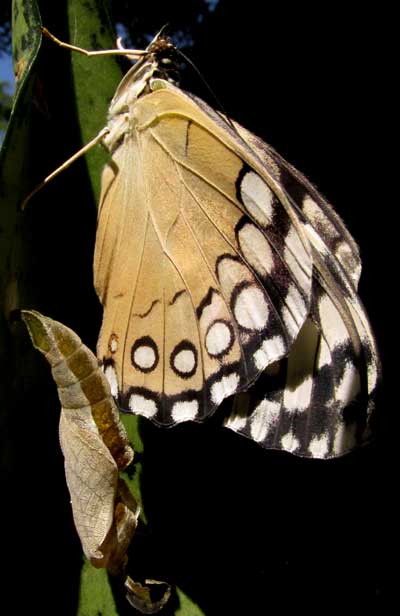
A close-up of the exuvia showing some interesting details is shown below:
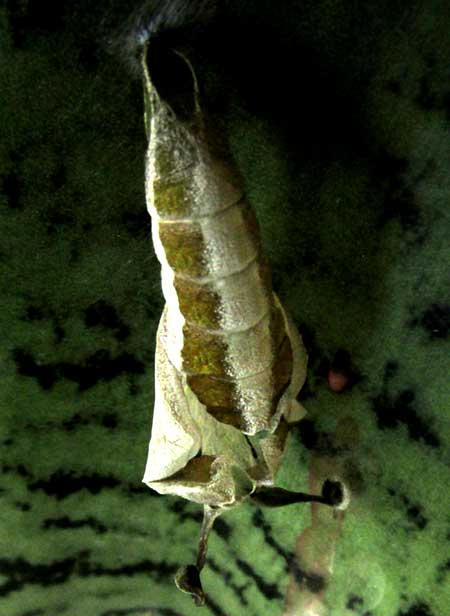
I'm surprised that the parts from which the butterfly's antennae were withdrawn are pancake-shaped at their tips, and so broad at their bases. Maybe the antenna tips were coiled within the pancake part.
Among the dozens of crackers flitting around beneath the Neem, none displayed such conspicuously tawny-colored patches on their underwings. Probably the tawny color fades soon after the first flight.
Of course I sent these pictures to Bea in Ontario, who agreed that our emerging butterfly was "most likely" a Guatemalan Cracker. Indicating the difficulty in separating Guatemalan Crackers from similar Variable Crackers, she passed along someone's remarks that in our pictures "... a relative uniformity in the pupil size is evident... The pupil size in Variable Crackers usually decreases in size from the costal to the anal HW margin."
Seeing other cracker pictures taken beneath the Neem tree, Bea also says that it's a mixed gathering, with at least one other species present, the Gray Cracker. It's worth noting that Neem trees are native to India, and the Mother-in-law Tongue our emerging adult was clinging to is from southern Africa, so our crackers didn't evolve to seek out these plants, but are flexible enough to use them. And flexibility is adaptive in frequently disturbed environments. {But see sidebar}